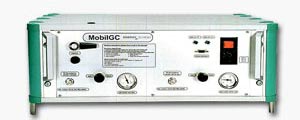Our solutions
Maintenance & service on transformers up to 500 KV
Oil sampling
- Use clean 1-liter bottles with gas-tight closures as sample containers.
- Special aluminium bottles with plastic screw cap and seal are usually used.
- The closure must be so tight that no air is drawn in when the sample cools.
- If glass bottles are used, only take the oil sample if it is certain that the temperature of the sample is greater than or equal to the storage or shipping temperature when it is taken.
- Take samples for gas analyses only by the overflow method. The operations must be carried out rapidly and without any interruption in order to prevent the oil sample coming into contact with the atmosphere as far as possible.
UVR oil regeneration plant
Gas in Oil – Analysis (DGA=Dissolved Gas Analysis)
By means of DGA mainly slowly developing defects can be detected. The temporal development of the gas concentrations enables a trend analysis, which also allows a prognosis of the transformer’s lifetime.
- Partial discharges and discharges
- Formation of foreign layers on contacts
- Abnormal cellulose degradation
- Local overheating of metal parts

Colour and appearance (according to ISO 2049)
A rapid darkening or darker oil are indications of oil ageing.
Breakdown voltage (measured according to VDE 0370 part 5)
Water content
Transformer maintenance
In principle, all transformers consist of the following materials:
- Insulating materials such as pressboard
- Paper
- Wood and transformer oil used for insulation and cooling
- Electrical sheets
- Copper
These materials are subject to natural aging during normal operation, which is highly dependent on the operating conditions. In normal operation, they are approx. 25 – 30 years, provided they are professionally maintained and cared for.
However, during the course of a transformer’s life, there are events that can be regarded as non-normal operation:
- e.g. overload, overvoltage and, due to overheating, further problems in cooling.
These events accelerate the ageing of the materials. One of the most common causes of transformer malfunction is oil. To detect this in good time, it is essential to carry out regular oil checks. With early detection, countermeasures can be taken, which certainly does not prevent the aging process, but largely delays it.
Safepoint
For the purpose of maintenance, revision and repair, transformers must be planned or unexpectedly climbed. According to the relevant regulations of the professional associations, personnel must be secured against falling.
In contrast to fixed baffles, which have to be removed for the operation of the plant, BORNACK-LATCHWAY fixed stop structures are available at all times.
The LATCHWAY system consists of a horizontally tensioned stainless steel safety rope with rope guides at regular intervals of approx. 1.5 m. These guides can be passed over freely by the special running element without loosening the safety device. This increases the acceptance of the employees to use such a safety device.
A safety shock absorber with tensioning device keeps the rope at a defined pretension and protects people and material from overloading in the event of a fall accident. The intermediate guides prevent the rope from sagging too much and thus avoid the risk of impact on the relatively close ground.









